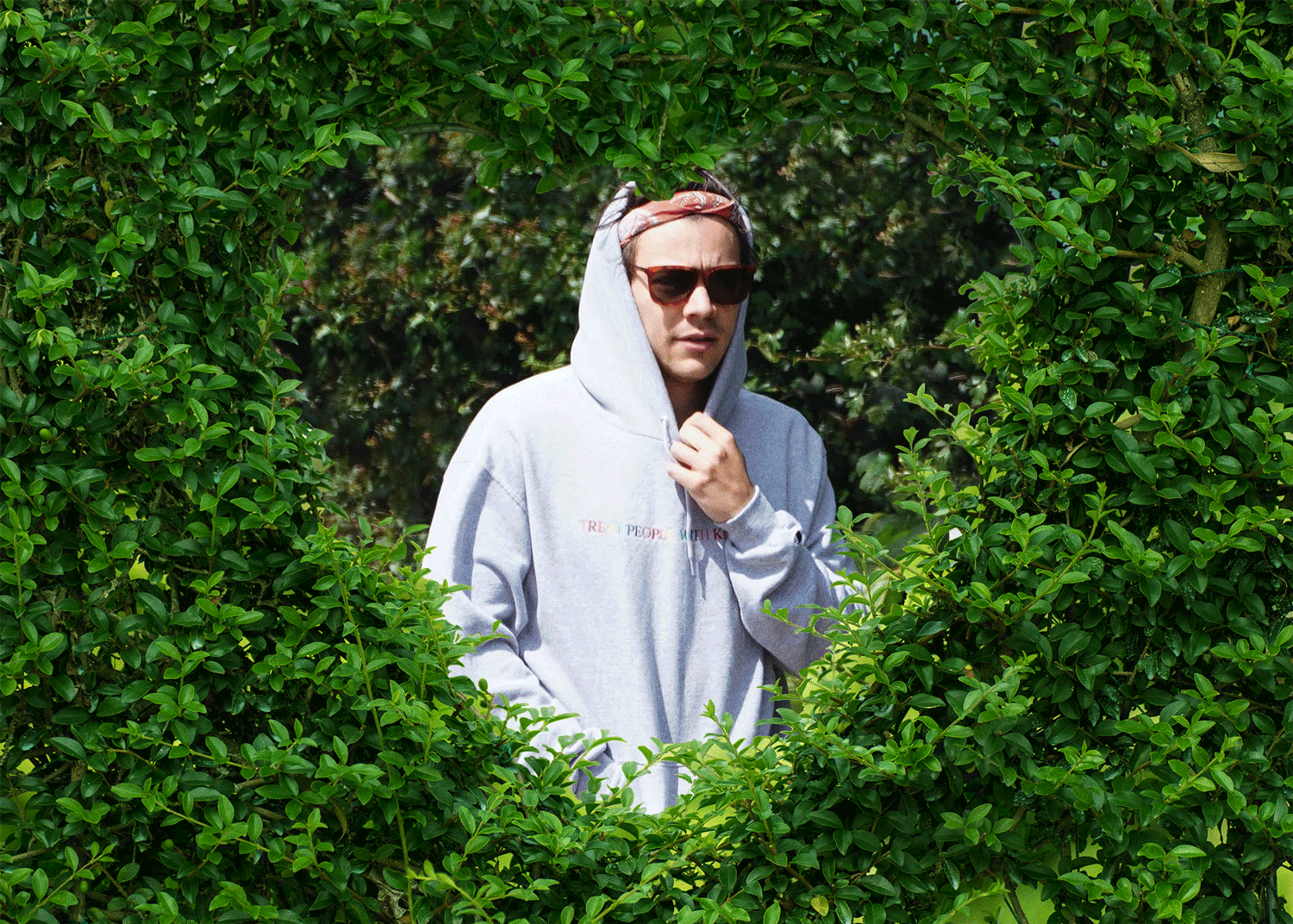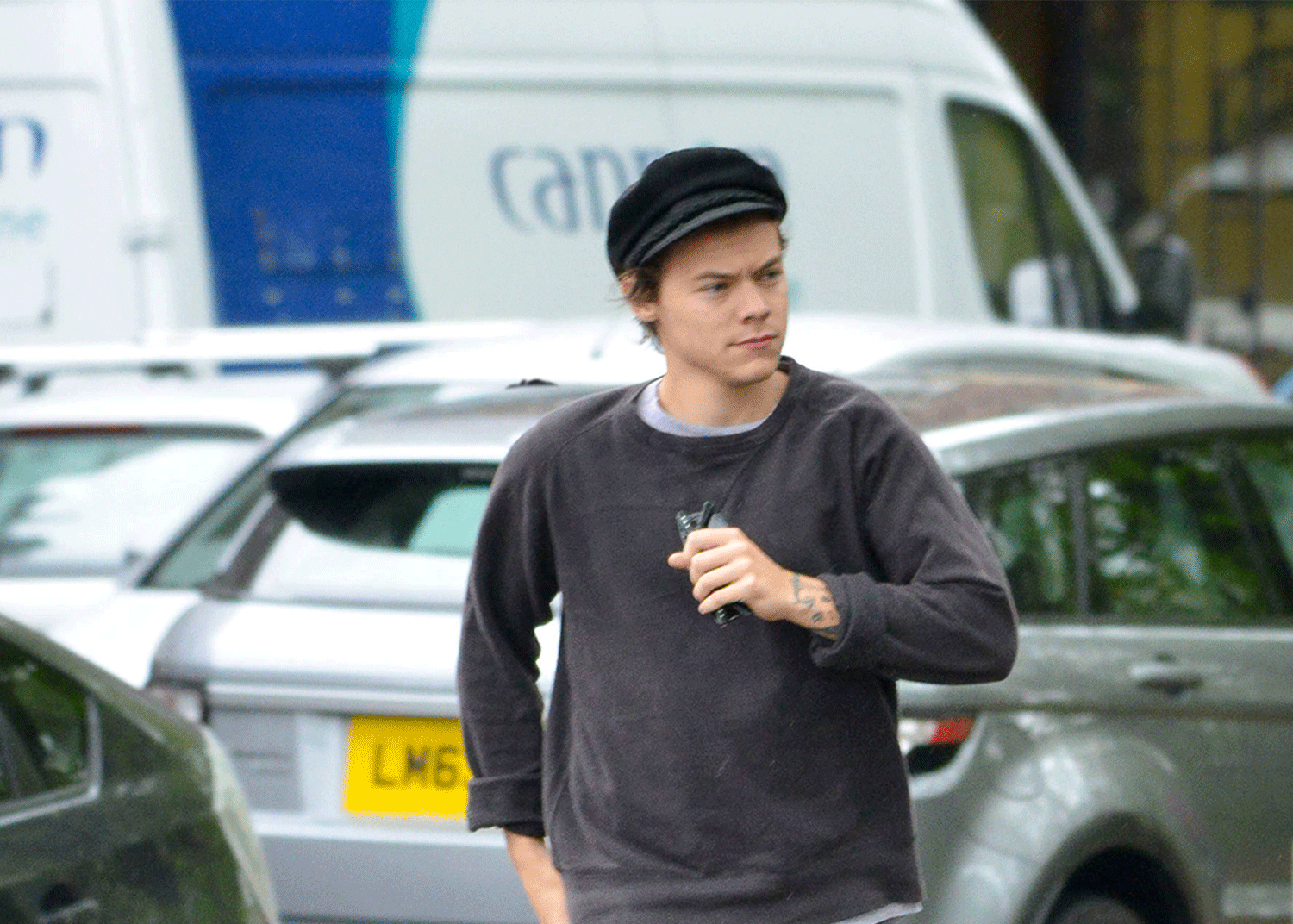Extreme celebrity stalking in the digital age

In a novel new case, a man was arrested after discerning his idol’s location by zooming into high-res photos of her eyes. But is this the new normal?
Culture
Words: Trey Taylor
Artwork: Jonathan Amaya
Want to hear something creepy? In early September, a man was arrested in Japan for stalking and sexually assaulting 21-year-old pop idol Ena Matsuoka, part of the band Tenshitsukinukeniyomi. He discovered her location by zooming in to high-res photos of her glassy cartoonish eyes, posted all over social media, and cross-referencing the scenery reflected in them with Google Street View. The stalker found the nearest subway station, even the correct storey of Matsuoka’s apartment block, by gazing into her pupils. He waited until she arrived home one night from a concert before confronting her outside of her entrance, where he was later arrested.
So too was the guy whose “life’s mission” it was to impregnate Miley Cyrus. David Rumsey, 42, was spotted in the crowd at her Las Vegas concert after Cyrus’ security identified the balding man who sent unhinged tweets to the singer. (Rumsey had detailed plans to raise Michael Jackson and Prince from the dead for a Party in the U.S.A. with Cyrus.)
This past week, Harry Styles testified against his stalker: a Spanish import who kept shoving notes through his front door and showing up at his local pub. Styles appeared in court behind a screen for privacy, and alleged that the man was sleeping outside his home in London, when Styles offered him some cash. “He told me that he couldn’t accept the money for religious reasons,” Styles said. “He said he was vegan.”
The vegan stalker, Pablo Tarazaga-Orero, took this gesture of kindness as an invitation to camp out front of Styles’ door for months on end, approaching him at inopportune times and forcing the Lights Up singer to hire a security guard. The notes posted through his door contained his bank details and a message requesting Styles send him the money he had initially offered. “His facial expression made me feel a little uneasy; it was a kind of smirk,” Styles described of his multiple encounters with the stalker. “I realised there was something not quite normal.” Tarazaga-Orero had “a vision” that the pair would eventually be together in Ireland. Instead, he was found guilty and is awaiting sentencing.

Why do people stalk the rich and famous? Dr. James Houran tried to answer that in a 2015 research paper titled “Exploring the Relationship Between Identity Status and Celebrity Worship”. Houran is a 25-year veteran in applied psychological research, and ascertained that “compromised identity structure in some persons facilitates psychological absorption with a celebrity, in an attempt to establish an identity and a sense of fulfilment”. That is all to say – in less academic terms – that some try to gain more of a personality by becoming obsessed with their heroes. Any interaction with them just adds more to the story.
“The people that [actively pursue someone], in my opinion, create a narrative in their head. It’s not that hard to do; I do it all the time as a writer – you can come up with a million different reasons for two people to be in the same room,” adds Matt Spicer, who co-wrote and directed the stalker dramedy Ingrid Goes West in 2017, wherein Ingrid (Aubrey Plaza) follows Taylor (Elizabeth Olsen), her basic social media idol, across the country in an attempt to infiltrate her life. Spicer wasn’t specifically inspired by any real-life events, but he did watch the Ricardo Lopez video – a Björk stalker who took his own life because, at the time, the singer was dating Goldie.
“The people that [actively pursue someone], in my opinion, create a narrative in their head. It’s not that hard to do; I do it all the time as a writer.”
Matt Spicer, director of Ingrid Goes West
“What we tried to show [in Ingrid Goes West] was that Ingrid is really motivated by her loneliness. [Taylor offers] a nice note that she probably never thought about again, just saying, ‘Oh, here’s the name of the restaurant,’ and, ‘Hope you like California,’ or whatever. Someone takes that as, ‘Wow, they really saw me, we have this real relationship here.’ And what Ingrid doesn’t know is that Taylor is probably sending 100 of those messages a day.”
What stalkers do in creating their personal parasocial narratives is play hunter-gatherer, which Dr. Houran describes as an “absorption-addiction model.” It constitutes gathering facts and information about a certain celebrity, possibly in an innocent way, until they are so saturated with info the only logical next step is to attempt contact or seek them out in the real world.

The best-case scenario as a celebrity stalker is having the target think you are an ardent fan who just chanced upon their whereabouts. You share a pleasant conversation, tell them how much their deep-cut-second-album track got you through a particular rough patch, and part ways knowing that you probably inflated their ego for a fleeting moment and made some kind of memorable impact. Maybe you got a selfie. The worst-case scenario is shame and infamy on the world’s biggest stage and serious jail time – not to mention the person you want to have your babies filing a restraining order against you.
The aforementioned J‑Pop zealot used the powers of digital deduction to sleuth Ena Matsuoka’s whereabouts, a phenomenon that is becoming increasingly easier the more virtual our lives become. Social media has also popularised the creepshot. Taking stealth photos of celebrities in public has become somewhat of a crowdsourced Gawker Stalker, tracking their positions as they make their way to fancy restaurants or through a parking lot.
That is how Hunter Livingston found out that he was living just a few doors down from Timothée Chalamet. In a YouTube video titled “is timothée chalamet my neighbor? *with proof*”, Livingston talks directly to camera for seven minutes. It has only 1700 views, but Livingston homes in on Chalamet’s East Village apartment by yarn-mapping the locations of different images he’s posted to Instagram and cross-checking them with info he has revealed in interviews. It comes across as pretty harmless, but on the other hand, can be just the ticket for a location-hungry stalker.
“Websites and tabloids have taken it upon themselves to post every home address I’ve ever had online. You get enough stalkers trying to break into your house and you kind of start prepping for bad things,” Taylor Swift wrote in Elle earlier this year. “Every day I try to remind myself of the good in the world, the love I’ve witnessed and the faith I have in humanity.” Swift’s stalker, Florida man Roger Alvarado who was released from jail after a stint for stalking the singer, ended up returning to her Manhattan townhouse, climbed a ladder to the second floor and broke a window using a brick. He was arrested again.
Digital stalking can be innocent, however. One Instagram account, @disneyland_celebs, is a sublime manifestation of appreciating megastars from a safe distance, posting photos of people like Seth Rogen and Heidi Klum milling about the Happiest Place on Earth. The account is run by Debbie, 21, and Mike, also 21, and boasts nearly 85k followers. Debbie started the account because she liked the show Once Upon A Time. “One of my favourite actresses Ginnifer Goodwin was at Disneyland. I knew that if I was ever at Disneyland and my favourite role model was there I’d love to meet them,” she wrote in an email.
At first, Debbie would search “Disneyland” on Twitter and see if anyone had posted images she could use, or visit the park herself. Now, she relies mostly on submissions. “There are photos that get submitted that I just don’t feel comfortable posting,” Debbie explains. “When the celeb is with family or there are children in the shot, I cover the child’s face or search for another photo. Personally, my morals go along with the law, if that makes sense. It is a public area and people are free to photograph you, so if you know you have a following you need to understand that when you’re out and about – whether it be Disneyland or somewhere else – somewhere someone is going to recognise you and sneak a pic or ask for a photo. I personally don’t feel bad taking a sneaky pic of a celeb.”
There are no sinister undertones to what the pair does. And the location in which these photos are taken is public and heavily monitored. “One of my goals for the page over time has been to extract that inner child from everyone,” Debbie continues. “Disneyland is a place where no matter who you are, what you do, how you look or what language you speak, you’re welcome and invited to make memories that will last a lifetime.”
Though it’s not yet a crime to zoom in to your celebrity crush’s eyeballs, investigate their favourite pizza joint and furiously tweet “choke me zaddy” at Harry Styles, just know that if you take any action of the sort in real life you’ll probably end up on their shit list. And there’s nothing worse than getting cancelled by your favourite pop star.

